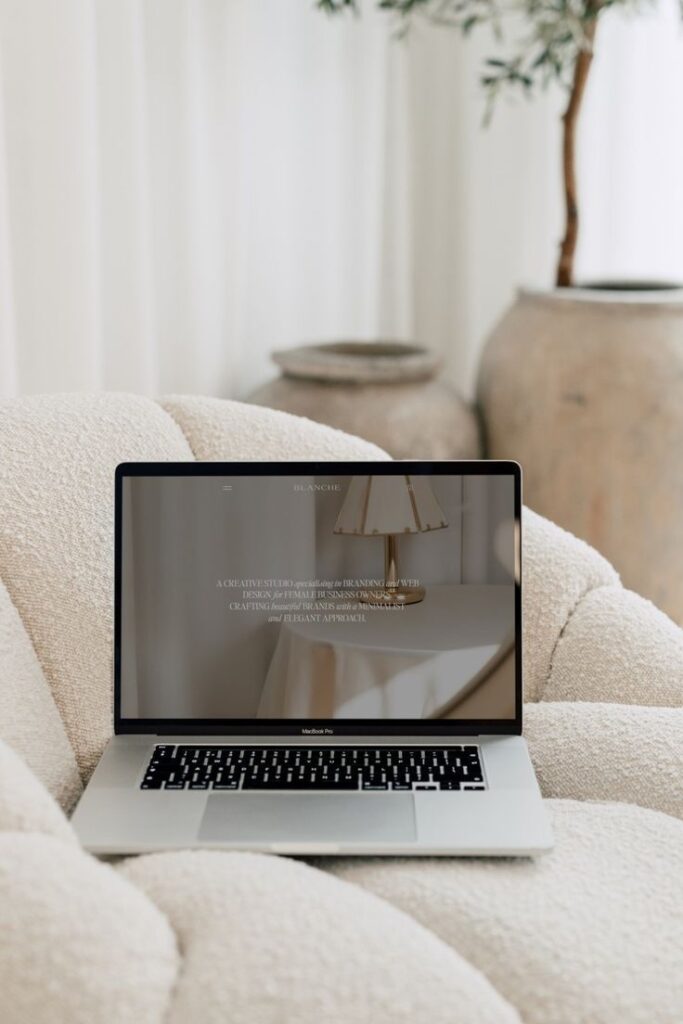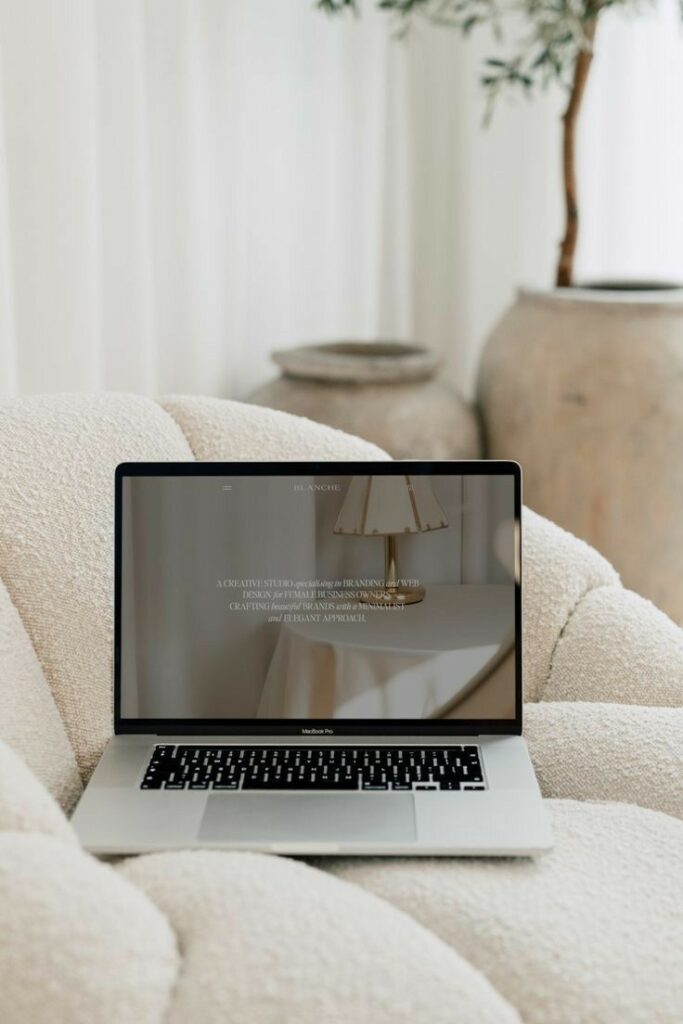If you’ve ever admired a beautifully structured website and wondered what it takes to create one yourself, becoming a web designer could be the right path for you. To become a web designer, you need to learn the fundamentals of design, master essential tools and coding languages like HTML and CSS, and build a strong portfolio to showcase your skills. With creativity and technical ability, you’ll be able to transform ideas into real digital experiences.
Understanding how websites work and developing both visual and practical know-how are key parts of the journey. Whether you’re self-taught or taking structured courses, your focus should be on building real projects that let your skills shine.


Key Takeaways
- Learn core design and technical skills essential for web design.
- Develop your abilities through hands-on practice and personal projects.
- Showcase your work in a portfolio to start your professional journey.
Understanding Web Design
To become a web designer, you need to know how websites are planned, how they look, and how users interact with them. This means learning both the artistic and technical sides of web creation and knowing how your work connects with web developers, user experience, and digital tools.
What is Web Design
Web design is the process of planning and creating the layout, structure, and visual elements of a website. It focuses on how a site looks and feels, from fonts and colors to the overall arrangement of content. Your goal is to make websites visually appealing, easy to navigate, and enjoyable for users.
A web designer organizes content, images, and interactive elements to shape the user’s experience. This involves wireframing, prototyping, and choosing visual patterns that match the brand’s message. Designers often use tools like Adobe XD, Figma, or Sketch to build and test their designs before any coding happens.
Web design also covers how sites look on different devices. With more people using mobile phones and tablets, designers work with responsive layouts so content displays well everywhere.
Key Skills for Web Designers
You need a mix of creative and technical skills to succeed as a web designer. Visual skills are important—color theory, typography, and composition all play a role in building attractive sites.
Technical knowledge is also needed. Understanding HTML, CSS, and sometimes JavaScript lets you create designs that developers can build. Even if you don’t code daily, knowing these basics helps you design what’s actually possible.
Key Skills Include:
- Graphic design
- User experience (UX)
- User interface (UI)
- Basic coding (HTML, CSS, JavaScript)
- Communication
- Problem-solving
Experience with design software like Adobe Creative Cloud or Figma is a must since these tools are used daily. Staying familiar with best practices in UX and UI keeps your designs effective and user-friendly.
Web Design vs. Web Development
Web design and web development are two closely related roles, but they focus on different parts of the website process. As a web designer, you handle the visual concepts, layout, and overall look of a site. You create the experience and interface that visitors see and interact with.
A web developer takes your design and turns it into a working site using code. Developers use programming languages like HTML, CSS, JavaScript, and backend tools to build the features and functions you design.
Here’s a quick comparison:
| Web Designer | Web Developer |
|---|---|
| Focuses on look and style | Focuses on functionality |
| Uses design software | Writes and tests code |
| Plans user interface | Builds user experience |
| No advanced coding required | Requires coding skills |
While your job overlaps at points, understanding each role helps you collaborate more effectively. Knowing the basics of both design and development makes handing off projects smoother and improves the final website.


Learning Essential Technical Skills
To become a web designer, you’ll need to learn the foundational languages and tools that power the web. Skills like HTML, CSS, and JavaScript are at the core, while other programming languages can help expand your opportunities.
Mastering HTML and CSS
HTML (HyperText Markup Language) is the basic building block of any website. You use it to structure content, such as headings, paragraphs, lists, images, and links. Every web page starts with HTML.
CSS (Cascading Style Sheets) lets you control the visual appearance and layout of your HTML content. Through CSS, you set colors, fonts, spacing, and responsive layouts for different devices.
Knowing both HTML and CSS is not optional—they’re fundamental to everything you’ll do as a web designer. Practice by creating sample pages, experimenting with properties, and using developer tools in browsers to see changes in real time.
Key concepts to focus on:
- HTML tags and structure
- CSS selectors, properties, and values
- Flexbox and Grid for layouts
- Responsive design for mobile devices
Getting Started with JavaScript
JavaScript is what adds interactivity and dynamic features to web pages. It’s used for tasks like form validation, menu animations, image sliders, and updating content without reloading the page.
You don’t need to master every advanced feature right away. Start with the basics: variables, functions, loops, and events. Learn how JavaScript interacts with the HTML and CSS on your page by manipulating the Document Object Model (DOM).
Focusing on practical skills, you might:
- Write scripts to show/hide elements
- Validate user input in forms
- Change styles dynamically based on user actions
As you get comfortable, exploring popular JavaScript frameworks or libraries (like React or Vue) can be the next step, but understanding core JavaScript is more important at the beginning.
Exploring Other Programming Languages
While HTML, CSS, and JavaScript are essential, learning additional programming languages can open up more opportunities. For example, learning Python can help you with web automation or integrating AI features. Java and Swift are useful if you want to branch into web server programming or mobile app development.
A foundation in computer science concepts—such as variables, logic, and algorithms—can also help you adapt to new languages as needed. Not every web designer needs to become a software developer, but knowing the basics of other languages can make you more versatile.
You might decide to learn these languages later, once you’re comfortable with the essentials, or when a project requires it. Focus first on what’s most relevant to web design, then expand your skill set as needed.


Developing Design Expertise
To succeed as a web designer, you need solid skills in visual and graphic design, the ability to use design software, and a clear understanding of typography and imagery. Each of these elements directly impacts the look, usability, and effectiveness of the websites you build.
Principles of Visual and Graphic Design
Strong web design is based on core principles such as balance, contrast, alignment, proximity, and hierarchy. These guide how you lay out content and organize graphics, so users can navigate your site with ease.
Key principles include:
- Balance: Distribute elements evenly so no section overpowers another.
- Contrast: Use color, size, and style differences to draw attention and improve readability.
- Alignment: Keep text and images lined up to create a cleaner, more professional appearance.
- Hierarchy: Make important elements stand out by adjusting size, weight, or placement.
Learning these principles lets you create pages that look good and function well. Reviewing work with these points in mind will help you spot improvements and ensure professional results.
Using Design Software and Tools
Modern web design relies on powerful tools to bring ideas to life. Adobe Photoshop, Illustrator, and XD are industry standards, but apps like Sketch and Figma are also popular for UI design and prototyping.
Getting comfortable with these tools lets you:
- Create detailed graphics and layouts
- Manage and export images at the right size and quality
- Build interactive prototypes and design systems
- Collaborate with developers or other designers
Explore free trials or community editions if you’re new to these platforms. Many online courses and tutorials can help you master the basics, from drawing vector graphics to building asset libraries for your projects.
Understanding Typography and Imagery
Typography is more than picking a font—it’s about using font choices, sizes, and spacing to make content easy to read and visually appealing. Consistent typographic systems improve user experience and establish a visual identity for your site.
Consider these factors:
- Font Pairing: Use contrasting but complementary fonts for headings and body text
- Hierarchy: Headers, subheaders, and body copy should have clear distinctions
- Readability: Line height and spacing matter as much as font choice
Imagery also plays a crucial role. You’ll need to select, crop, and optimize images to support your message and keep sites fast. Consistency in graphic style and high-quality visuals can set your web designs apart and make them more memorable.


Creating Your Portfolio Website
A strong portfolio website is essential for landing clients or jobs as a web designer. Your site showcases your skills, demonstrates your understanding of user experience, and serves as your personal branding platform.
Building and Showcasing Your Work
Start by selecting 3–5 of your best web design projects. Display a mix of real client work, personal projects, or redesigns of existing sites. If you don’t have client projects yet, create your own sample websites—these can show your skills just as effectively.
Use visuals and short descriptions for each project. Include details about your design process, tools used, and specific challenges. Present your work in a grid or table to make it easy to browse, for example:
| Project Name | Type | Tools Used |
|---|---|---|
| Cafe Red | Personal Site | Wix, Figma |
| Artify | Client Project | WordPress |
Make sure your projects are clickable, leading to live sites or detailed case studies.
Highlighting User Experience and Responsive Design
Emphasize your ability to design web pages that work on any device. Always showcase responsive design by including screenshots or live previews of your sites on mobile, tablet, and desktop.
Discuss user experience (UX) improvements you implemented. Briefly explain layout ideas, navigation choices, and accessibility considerations in your project write-ups. This can include accessible color schemes, intuitive menus, or fast load times.
A simple before-and-after slider or GIF can highlight your improvements directly. This shows potential clients or employers exactly how you consider usability in your website design.
Optimizing for SEO and Content
For your portfolio website to be discovered, apply search engine optimization (SEO) best practices to your content.
Write clear, concise descriptions with targeted keywords like “web design,” “responsive design,” and “portfolio website.” Fill out meta titles and descriptions for every page. Use headings (H1, H2, H3) properly to structure your content, and make internal links between related projects or skills.
Keep your site up to date, and add a blog if you can share relevant insights. Platforms like Wix make it easy to adjust SEO settings, track searches, and update content regularly.


Launching and Advancing Your Web Design Career
Building a career in web design involves more than technical skills. Staying up to date with new technologies, gaining certifications, and marketing yourself are essential for finding steady work and expanding your client base.
Certifications and Continuous Learning
Certifications demonstrate your professional skills and keep you competitive. Programs like Adobe Certified Professional or Google’s UX Design Certificate prove your expertise to employers and clients. They often cover industry-standard tools and web design best practices.
You should also stay engaged with new trends in responsive design, accessibility, and user experience (UX). Free and paid coursework from platforms such as Coursera and Udemy let you learn at your own pace. Join forums or online communities for updates and peer feedback.
Attending design workshops or conferences can help you network. Technology changes quickly, so continuous learning helps you adapt and avoids your skills becoming outdated.
Finding Web Design Jobs and Clients
There are multiple paths to finding web design jobs, whether you want a full-time position or freelance clients. Many designers use online job boards like Indeed, LinkedIn, or Remote OK to apply for roles at companies. Entry-level positions often require a portfolio and knowledge of HTML, CSS, and visual design tools.
For freelance work, platforms such as Upwork or Fiverr connect you with clients seeking web design services. Creating your own website to showcase your portfolio is also effective. Networking in design communities, local meetups, and social media can open up additional opportunities.
Having a strong and updated portfolio makes it easier for potential clients and employers to evaluate your skills.
Marketing and E-Commerce Opportunities
Web designers frequently contribute to marketing and e-commerce projects. Your skill set is valuable for creating online stores, branding, and marketing materials. Platforms like Shopify, WooCommerce, and Wix offer built-in solutions, but custom design is often in demand for businesses wanting a unique digital presence.
Understanding digital marketing basics, such as SEO and online advertising, can make you more marketable. If you partner with marketers or act as a consultant, you can expand your services and client pool.
Consider adding social media integration and email templates to your offerings. Many small businesses seek web designers with e-commerce know-how, so this can be a steady source of projects.
Job Outlook in the Digital Market
The demand for web designers remains strong as more businesses and organizations build or update their online presence. Even with do-it-yourself website builders, skilled designers are needed for custom projects and problem-solving.
Remote work continues to rise, letting you work with clients worldwide. According to the U.S. Bureau of Labor Statistics, job growth for web developers and digital designers is expected to be steady through 2032.
Your versatility matters. Designers who understand coding, mobile optimization, and digital marketing have more opportunities. As the digital market evolves, keeping your skills current makes your job outlook more secure.
- 921shares
- Facebook0
- Pinterest921
- Twitter0


